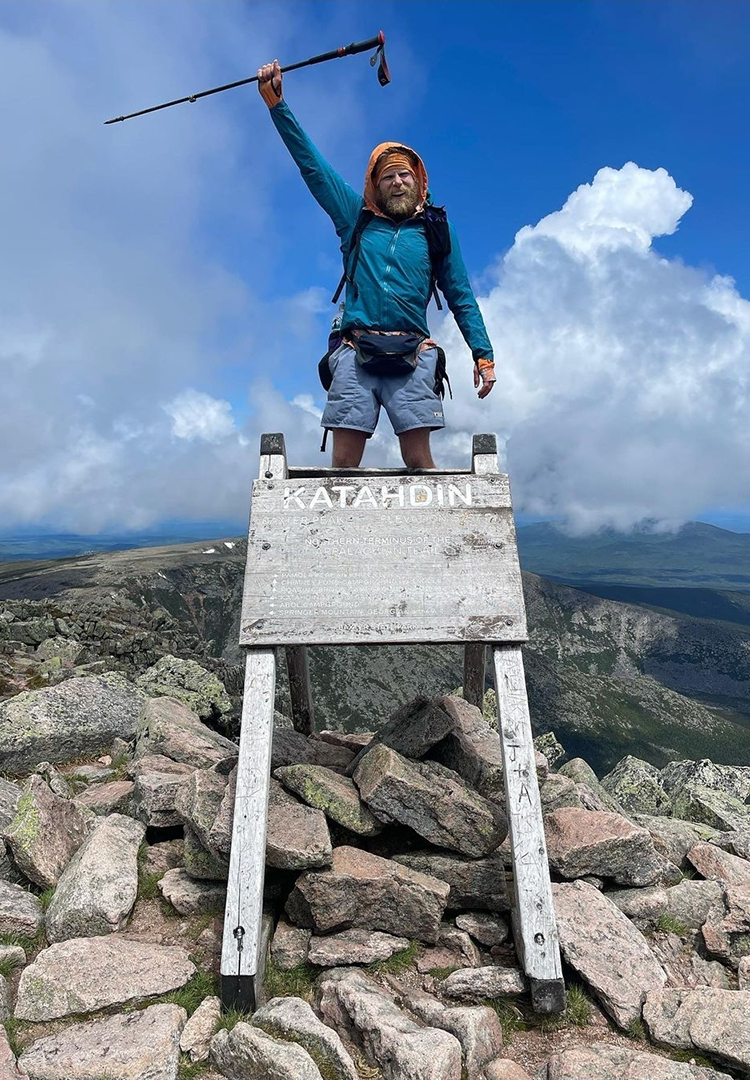
How to Thru-Hike the Appalachian Trail Part 1: Food
We asked our friend and Calendar Year Triple Crown Hiker, Professor Carl, to share some of his knowledge on something he knows all too well, Thru-hiking the Appalachian Trail. Carl used a Purple Robic Ohm on his trip and we’re happy to host his insight. This will be a multi-part series thanks to Carl’s extensive knowledge and commitment to informing the people. Part 1 will cover Food and Resupply with subsequent topics covering things like lodging, physical preparation, and most importantly, mental fortitude. Enjoy!
Preparation
How do you hike the Appalachian Trail? Well, simply put: one step at a time. I mean, obviously. But those single steps can sometimes transcend what you’re doing with your feet. There is so much that goes into such an endeavor beyond the grind of hiking. There are logistics to take care of ahead of time, rhythms to adjust to on trail, and fears to put to bed. To successfully thru-hike the Appalachian Trail, a person needs, more than anything, to have their mind in order. Having successfully thru hiked the entire trail twice, in very different ways, I think I have a pretty good idea of what goes into a successful thru hike.
The Appalachian Trail was my first thru hike. I had a bit more experience than I’d say the average person I met on trail did, with roughly 40 nights of backpacking under my belt when I set out in 2018. That first hike took 132 days from April 22-August 31, just a tad faster than the average pace of about 150 days. In 2022, I took on the trail again in the midst of a successful Calendar Year Triple Crown, making the trek in 96 days from March 2-June 5. Both hikes were NOBO, though due to the different seasons during which they took place, I had a healthy variety of differences in experiences.
One of my favorite pieces of advice to give people about thru hiking is: take all the advice you get with a ramen serving-size of salt. Particularly before a person sets on trail and during the first few hundred miles, anyone and everyone will bend over backwards to give their opinions on how everyone else should and/or needs to be hiking the trail. I typically find that the more adamant a person is that their way is THE way, the less likely that advice is to be of much help. The average hiker will hear contrasting opinions presented as gospel truth countless times during their thru. I think it becomes pretty apparent pretty quickly which voices need to be tuned out and which carry wisdom. All the same, it can be disorienting to say the least to figure out how to decipher all the opinions/facts/declarations that find their ways towards a green hiker.
All of that said, here’s my advice on how to hike the Appalachian Trail.
FOOD LOGISTICS
I think one of the most daunting logistical hurdles when looking at a thru hike can absolutely be one’s resupply strategy. How much food should I be carrying? Do I need to mail myself packages? What food can/should I be carrying? How accessible are towns? Can I get into towns without hitchhiking? These are all great common questions, so I’ll answer all of them.
How Much Food Should I Carry?
I’ve seen this addressed many ways, quite a few of which I have found don’t really apply to me. As with any/all the advice I give, this absolutely varies by person. Personally, I don’t find the need to be stringent about counting calories. I intentionally try to buy calorie dense foods, but I’m never keeping much of a tally. After my first few weeks on trail, I figured out how often I like to eat and got a ballpark idea of how much food would suffice me for a day. For the first few weeks or even months on trail, there’s nothing wrong with accidentally packing a little too much, ~just in case~, but I eventually made it a goal to be eating my last bit of food in the last few hours before I arrived in town. It’s never fun to be hungry on trail, but in reality, it’s almost impossible to pack so little food that you’d ever actually be in any kind of trouble. There are so many access roads, so much trail magic, so many overpacked day hikers, that it is FAR more likely for a hiker to have over packed food than it is to get oneself into any real trouble. (A Note from the editor; while what Carl says here is totally valid, you should not rely on outside sources for sustenance as you might find yourself in a pickle, and likely the kind you can’t eat.) When shopping for a budget value but nutrient dense food, 125-160+ calories per ounce per dollar is a reasonable aim. Caloric needs vary from person to person due to body type, metabolism, activity etc. so a ballpark caloric recommendation doesn’t always translate. Breaking your meal plan down into separate meals makes it a little easier to manage. Think in terms of breakfast, snack, lunch, snack, dinner.
Hiker hunger grows over time, but starting out, it can be hard to be hungry to eat enough in a day. This is normal. It’s also very normal to lose a lot of weight quickly when getting on trail. Our bodies are adjusting to the new daily rigors, and they will adjust how they consume calories. Our bodies actually become more efficient with calorie consumption over time, meaning that 500 calories later in a hike can actually go further than they do in the beginning, accounting for or even over compensating for bigger miles. I have found that even hiking upwards of 30-35 miles in a day, 3,000-4,000 calories is actually enough for me, which is not too much greater than my calorie consumption starting at 10-15 mile days.
In summary: eat when you’re hungry, but expect 3-6 weeks to figure out what “hiker hunger” means. Learn your hunger habits, and buy the food you need to satiate that. Your taste buds will change overtime so buying varied types of food that you actually want to eat is paramount. Expect weight fluctuation during this period.
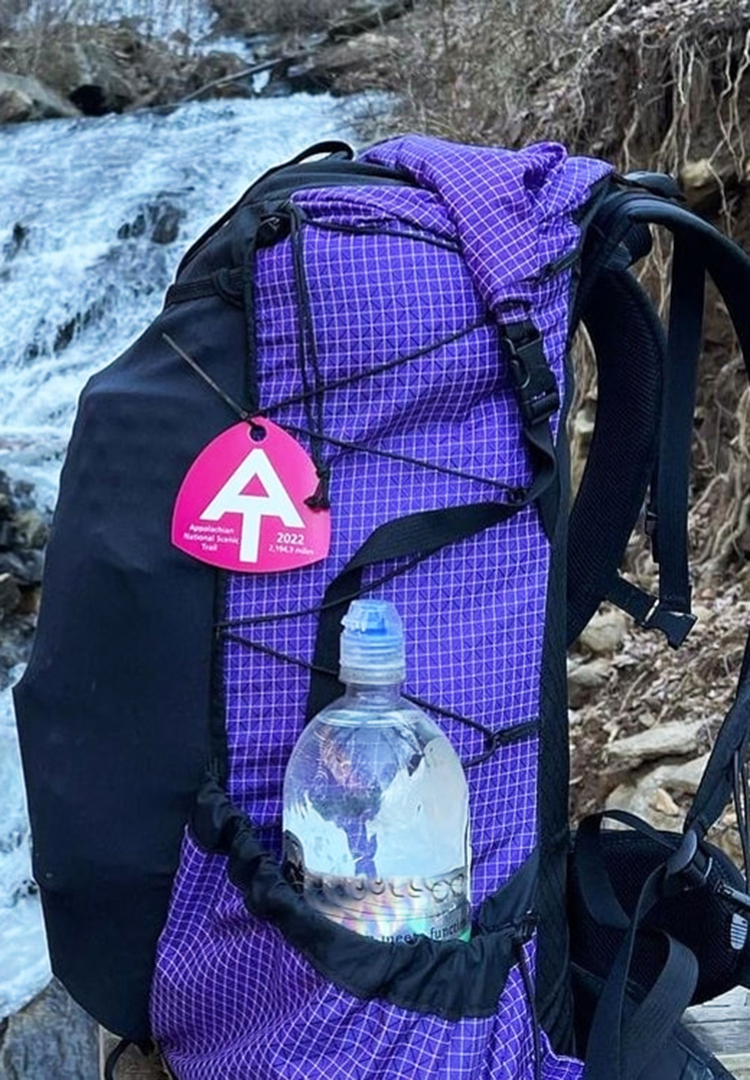
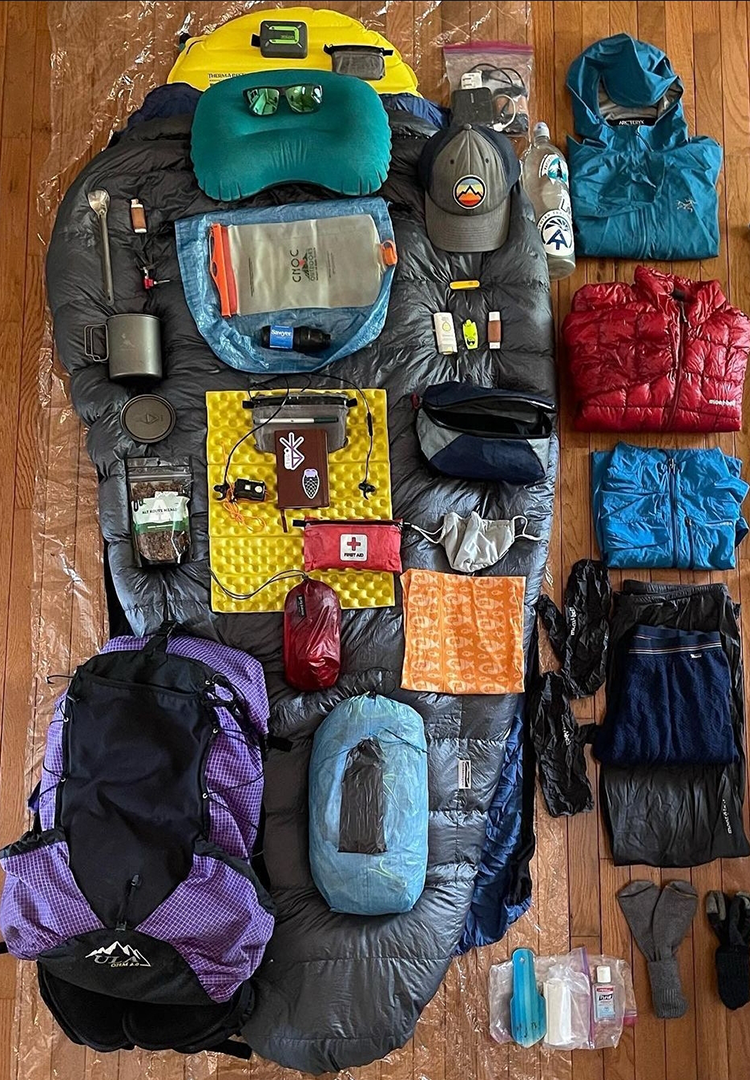
Do I Need To Mail Myself Packages?
Probably not. In reading old trail memoirs and talking to seasoned hikers, the mail system sounded downright magical to my inexperienced ears. Never have to worry about finding a decent grocery store? Send myself any treat I want without worrying about local availability? Bounce around town clothes? Save money by buying in bulk? All of these sounds like excellent perks, but in reality tends to cause quite the headache.
On my first thru hike, the research I did led me to believe I didn’t need to mail myself anything, and if I did, my wonderfully supportive family would pull off whatever I needed if I was desperate enough. I was still hesitant, as all of the aforementioned perks were wonderfully enticing. The more I spent time with other hikers, the more I regularly saw the downsides.
A lot of what I saw could certainly have been bad luck, but the one consistent issue I picked up on was the post office schedule. One of the most enjoyable parts of a thru hike is the freedom and liberation of time and schedules. Turns out, many small town post offices have pretty funky operating hours, especially weekends. A prepared thru hiker might correctly predict where they’ll be after a week on trail. Virtually no thru hiker knows when they’ll be arriving at the town they sent their 6th resupply box to. Small town post offices can (and often do) have downright bizarre hours, which, if nothing else, add an extra element of planning when getting close to town. I can count at least a dozen times I’ve been with a person who needed to get to a post office by noon on a Friday or risk sitting around town until Monday morning to get their boxes full of food they could have mostly bought at the local grocery store. But hey, they saved $12 (before shipping fees) by buying in bulk and have their favorite chocolate bar waiting on them. Seems like a good deal?
I’m probably (definitely) a bit (lot) biased from my own negative experiences with post offices, most of which were second hand anyway. I’ve been afraid my box might not arrive, but the few I’ve sent myself actually always have. Putting up with that fear is enough for me to not want to send packages to myself, but I’ve also seen it work out for plenty of people. I’m also rather privileged in being able to follow a simple, raccoon-esque diet on trail. As long as a store has ramen, peanut butter, chips, and some sort of bars, I’m happy for days. Fortunately, even most gas stations in any proximity to the AT carry this much.
For anyone with a more refined diet on trail, boxes are totally fine. My one recommendation though is, avoid post offices. Many hostels on trail will hold packages, as will local trail angels. Either of these options mean way more flexibility in picking up a package exactly when arriving in town.
What Food Can/Should I Carry?
Ah yes, the actual food itself. This is one of my favorite parts of the hiking experience. Many days on trail, the thought of the hot meal in my pack is what drives me to camp. It’s the warm thought that gets me through cold days. I love backpacking food. It’s worth noting, though, that plenty of people don’t. If at all possible, I think it’s worth figuring out how to love it. Even if you don’t, try to tell yourself that you do. Many people get burnt out on their food and just can’t get excited about it, or get up for eating. I have seen this to be the beginning of the end for many a hiker. Once the mind starts finding things to be negative about, that sickness can consume the mind and downright poison what was otherwise a successful hike. So like I said, try to love food on trail.
Anyway, onto the food. There is generally a pretty wide range of what people eat and when they eat it, but in general, a day of food looks something like this:
- Breakfast
- 2-4 Snacks
- Lunch
- 2-4 Snacks
- Dinner
- Dessert
Not everybody eats all three meals, and typically only one of them has much work that goes into it. As alluded to before, my days on trail revolve around dinner.
Anybody who carries a stove cooks for this meal, and some people (myself included) only cook this meal. Therefore, this is the meal people usually have the most fun with, and take the most pride in. It’s something to talk about with your buddies at the grocery store, and the meal that is most typically shared by the whole trail family. Indeed, my favorite part of the hiking day is the dinner debrief. I love sitting around my ramen bomb and talking about the differences between day and my buddies’. It’s my favorite time and way to socialize on trail.
Dinner
As far as what to eat for this dinner, there’s actually a pretty big variety, even in what can be purchased from a small town grocery store or even gas station. The baseline is dry food that you add to boiling water. The less required cook time, the better. My personal favorite is salt-laden internet concoction called a ramen bomb: 1 block of $.25 ramen, a 4 oz bag of instant potatoes, a hunk of cheese, and whatever hot sauce packets I found in town. This meal costs $2-3 and to this day I look forward to nights when I get to cook it. Other popular dinners include various combinations of flavored instant rices, mac and cheese, couscous, instant stuffing and gravy, and of course, backpacker meals. Backpacker meals are actually awesome, but they’re pricier and harder to find. Basically any food that just needs boiled water and a 5-10 minute cook time can suffice for dinner, and there are a surprising number of such meals at even the meagerest of grocery stores. Every store and gas station AT LEAST has ramen, 100% guaranteed.
Breakfast
Circling back to the start of the day, “breakfast” is a pretty loose term on trail. For me, this usually means a granola bar or pop tart served alongside a couple spoons of peanut butter or mouthful of trail mix while I’m packing up in the morning. I tried hot breakfasts a bit during my first hike, but I found I preferred getting on trail quicker to starting the day with a hot meal. Plus, cutting out a hot meal meant my fuel canister would last twice as long. I’ve mostly only seen oatmeal or grits cooked for breakfast, and of course plenty of instant coffee.
Snacks
I love a good, efficient snack. I’m all about efficiency when on trail, so I like to get snacks that I can eat while still hiking. Various types of bars are good for this of course, but I also like crackers sandwiches (cream cheese and chive are my go to) as well as chips. I’ll buy a bag, fully crush it, and waterfall chips into my mouth on the go. Individual 1 oz bags work best for this, but large bags can work okay too. When I’m by myself, I just snack all day between breakfast and dinner to optimize time and to keep from having to dig into my pack.
Lunch
When I do have lunch, my go to is a tuna packet. Like ramen, these are available everywhere near the trail. I’ll pour my crushed chips into my tuna packet for a good blend of flavors and texture. I’m not big on wraps, but I find many people are. Tortillas are very easy to come by, as are cheeses, dried meats, peanut butter, and nuts. The wrap is a pretty standard trail staple for sure. Lunch is also a great time to dig out some candy, eaten either from a large shareable container or from lots of little wrappers. Some people pull out a stove to cook for lunch, often ramen, and typically just during the colder seasons. I believe ramen is actually the best source of calories per dollar, as they still typically only run 25-33 cents along the southern bits of the AT, with about 400 calories per pack. Even accounting for more fuel consumption, this is a solid way to eat plenty of food cheaply.
Dessert
Not always eaten exclusively after dinner, it’s pretty common for hikers to carry some sort of candy with them at all times. I like mixing it up, but typically go for some combination of peanut butter and chocolate. It’s also common for folks to pack out baked goods from town, and during the hot season, there are plenty of ice cream stands at road crossings.
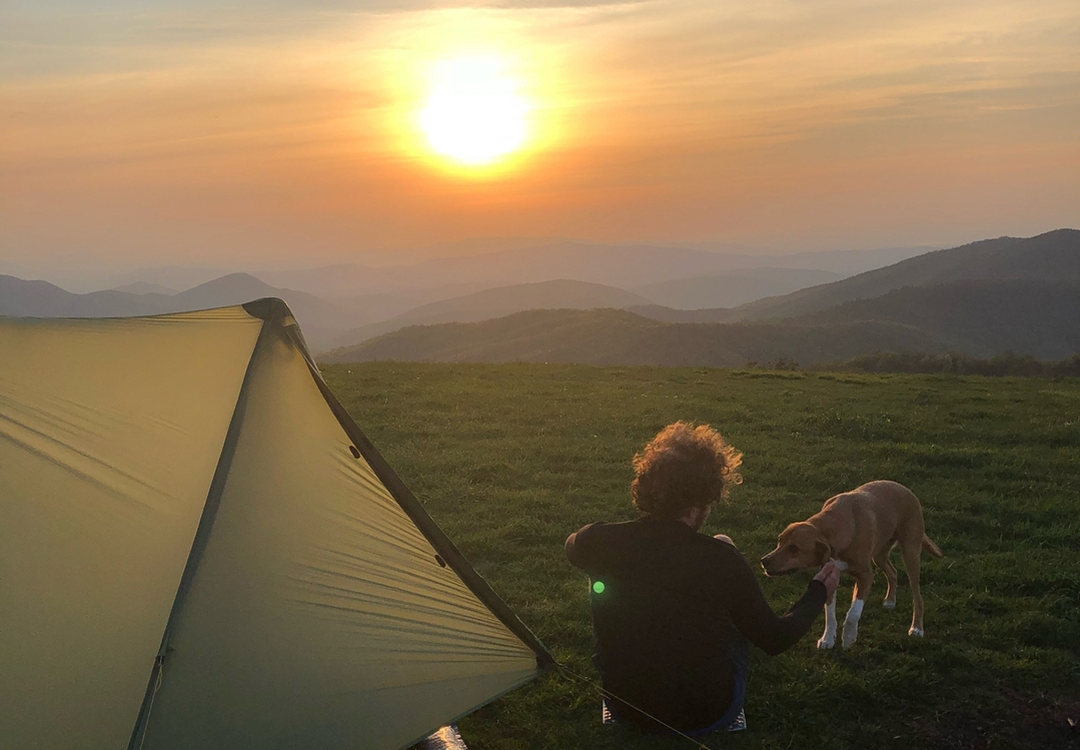
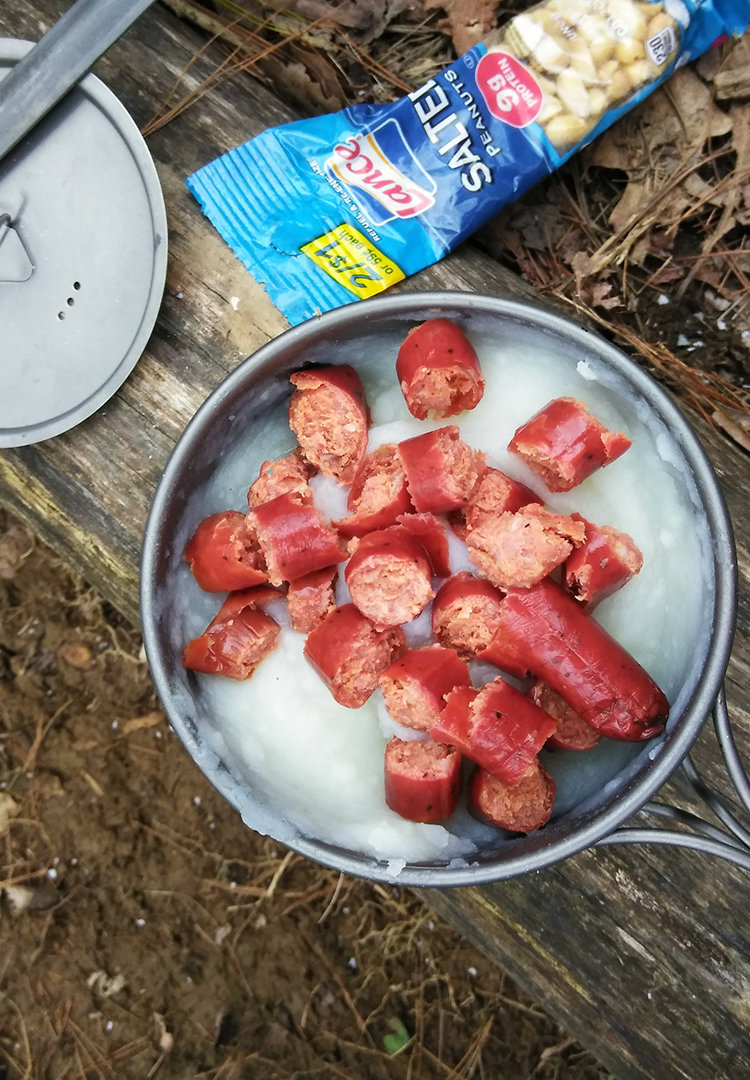
DINNER IS SERVED – PROF CARL

How Accessible Are Towns?
In general, towns are extremely accessible, both in terms of getting to and getting around. A handful of times, the trail goes directly through towns, and often it is walkable, within a few miles. I’ll get more into hitching on the next point, but for now I’ll stick to the subject of actually getting around town. The AT is an adventure through rural America. Towns in the northern sections really aren’t that different from those in the south. They are typically small, with exactly the resources a hiker would need. There is always a place to stay, and always a place to buy food. Most towns have both hotel/motel options and/or a hostel or two. If a place doesn’t have both, they’ll still have one.
Every town also has some sort of grocery option. The only times I can recall getting food from gas stations have been when they’ve been along a road anyway, breaking up a stretch between actually being in towns. Otherwise, count on having a grocery store in town. And the nice thing about small towns is, they’re small, which means close proximity to all resources. Lodging is always within feasible walking distance of a place to get food, and those places to get food are always near restaurants. It’s rare to have much more than a mile between all the resources a hiker could need.
Can I Get Into Town Without Hitchhiking?
It is possible to get into towns without needing to hitch, though hitchhiking makes logistics MUCH easier. I cover hitchhiking thoroughly in the next section, but for now I’ll say, yes, technically it is possible to get into towns without hitchhiking, though I believe most people will surprise themselves when it comes to hitching. Just in case though, here’s how you could string together a hitchless thru hike.
Some towns are directly on trail, so no transportation necessary. Even fewer towns are accessible by a bus or train that picks up directly from the AT. The most common non-hitch into town though would be a shuttle. The most popular resources for hiking the AT will include a list of contacts for those towns. Most hostels will pick up hikers and bring them into town. For hikers not staying at that hostel this will always be for a fee, but sometimes if you’re staying at the hostel the cost will be included. In addition to hostels, many trail angels in the area list their names and phone numbers to give hikers rides. These lists are sometimes posted at a trailhead or fencepost at the road crossing. So, for a fee, I do think it’s possible to string together prearranged rides into town for the entirety of the trail, with the caveat that a hiker would need to be more choosy over which towns they’d go into based on shuttle availability.
You can continue reading about hitchhiking during a thru-hike here.
PART 2 COMING SOON


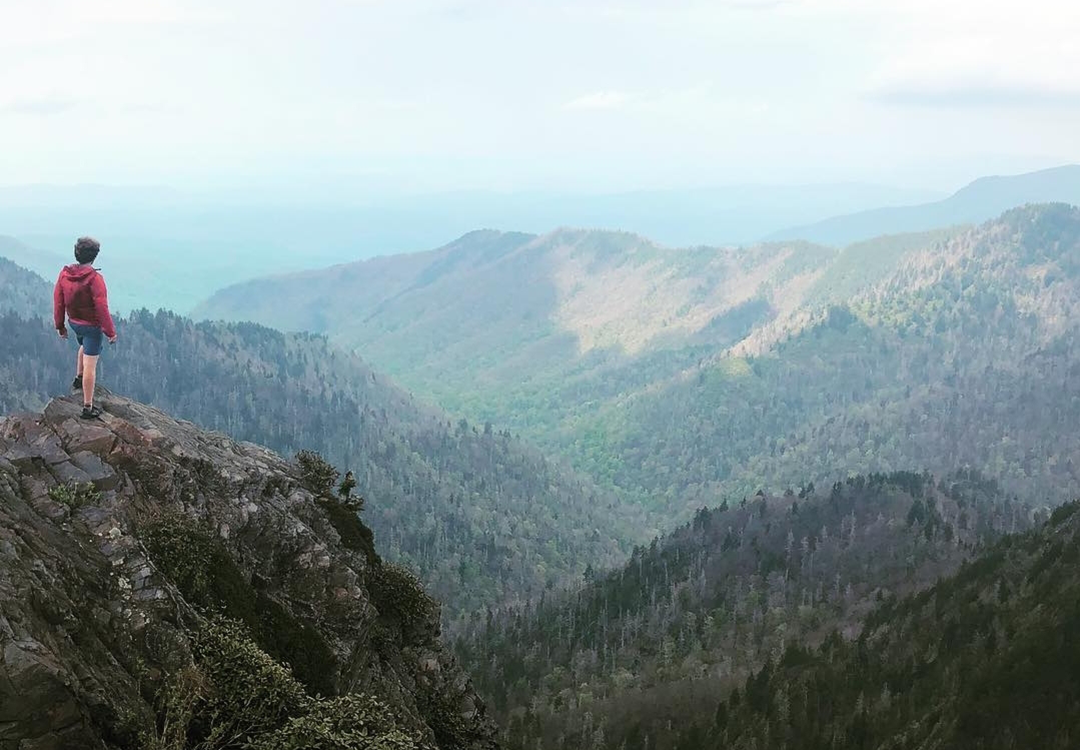
This is exactly what I needed. No nonsensense, don’t worry it’ll be ok article. I’ll be using an Ultra Circuit NOBO 2025
Hey Ken, Great to hear the piece was informative! We try to sculpt everything with real-deal info instead of fluff. Good luck on your Thru-hike! – Garrett
When I backpacked in the Sierras with friends or Sierra Club, I started making dehydrated meals to take along like chili and curried rice w/chicken. Only needed water to reconstitute, were very lightweight, and tasted great after long days. Many a fellow hiker came around wondering what I was making as the smells wafted through camp. If anyone is inclined to send packages to themselves, I recommend looking into dehydration especially if you only make 1 hot meal. Ramen was a great snack on the trail too. It wasn’t just for dinner.
I LIKE TO GO HIKING TO A TRAIL